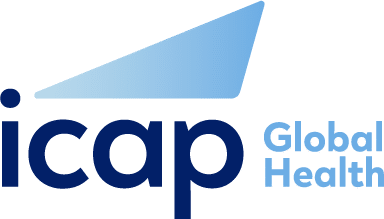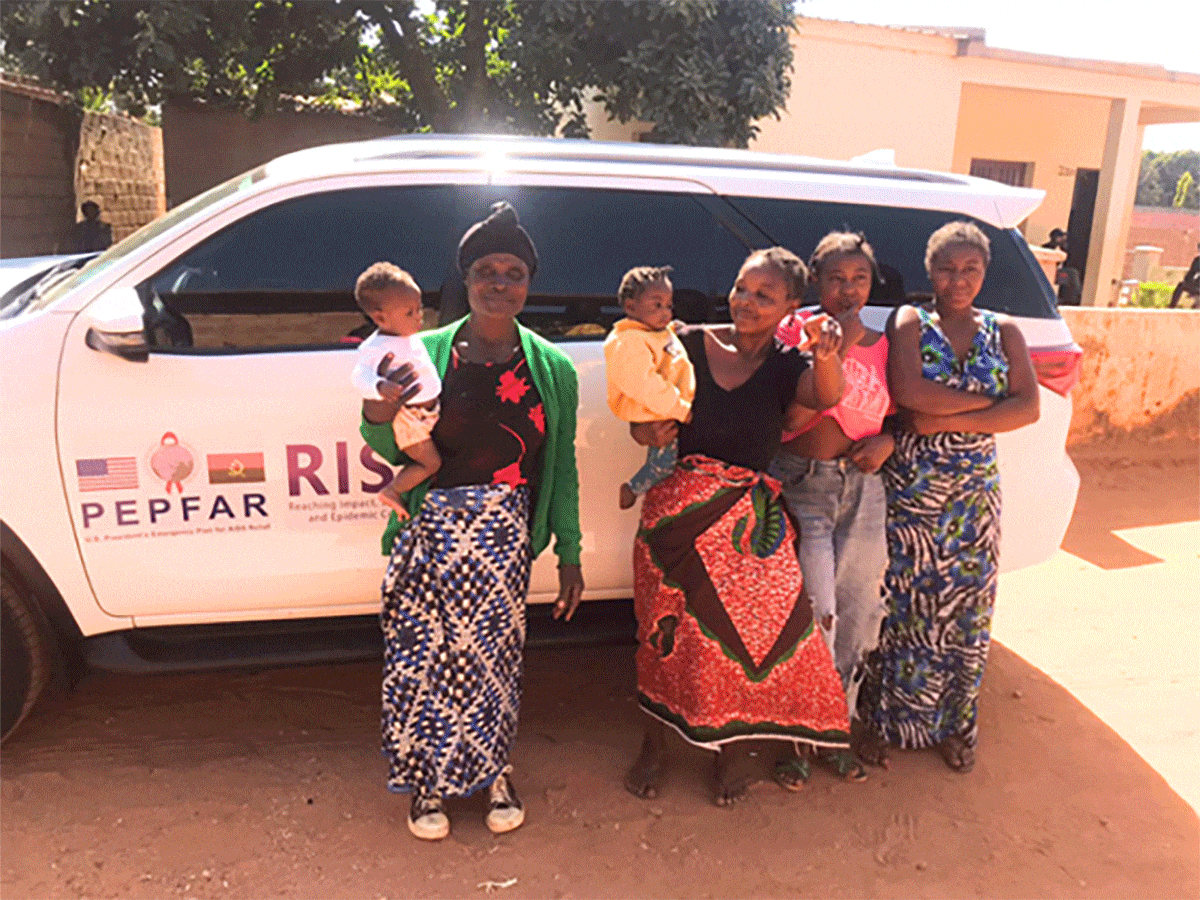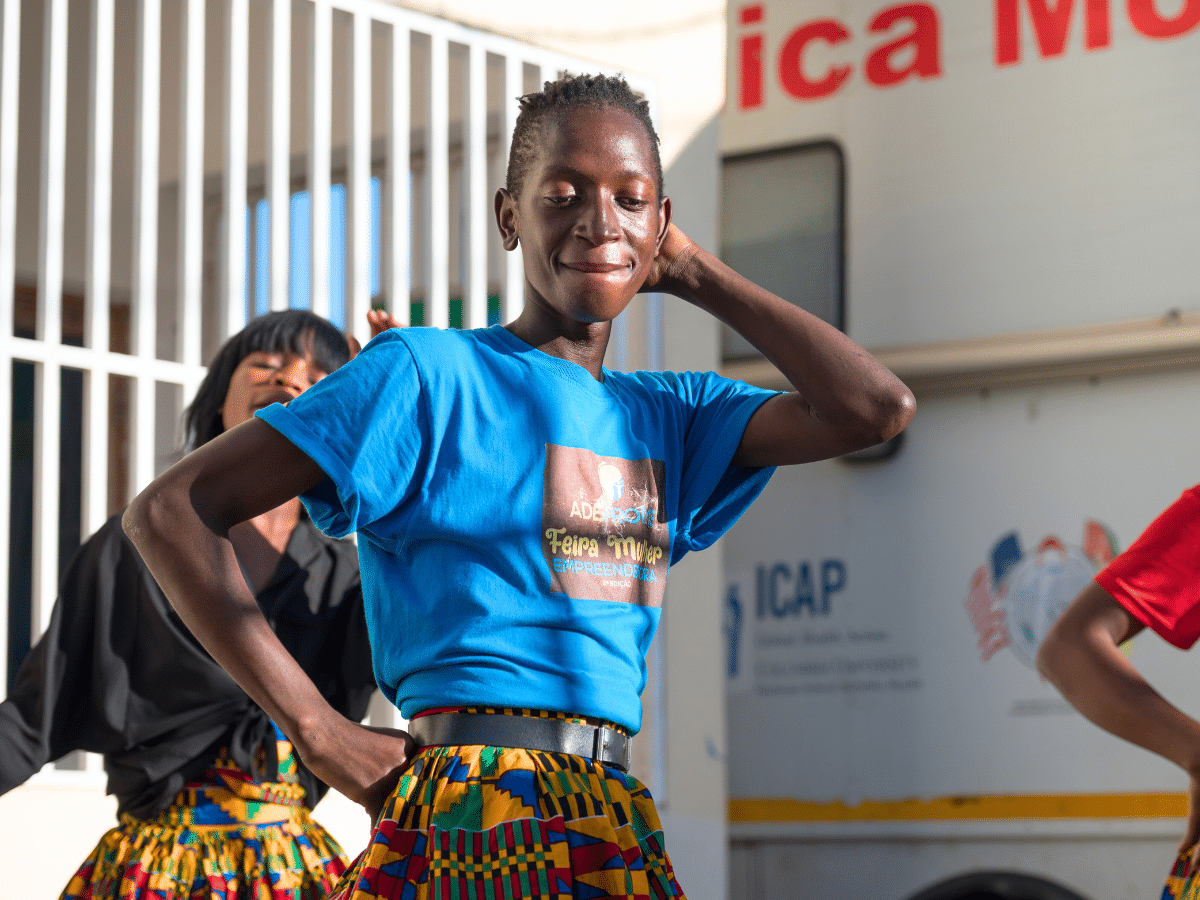Every year, the International AIDS Society’s Conference on HIV Science (IAS), offers a platform for leading professionals in HIV to present advances in the future of HIV prevention, testing, treatment, and research. At this year’s IAS conference (IAS 2021), ICAP’s groundbreaking, programmatic work was met with immense recognition.
With three satellite sessions, an oral presentation, and 27 electronic posters, including an award-wining abstract, ICAP’s presence at IAS 2021 showcased innovative work in strengthening health systems and advancing the implementation of science for HIV epidemic control globally.
ICAP’s PHIA Project E-Poster Wins Top-Scoring Abstract for Young Investigators
Thomas Carpino, MPH, survey coordinator, ICAP, was awarded the IAS/ANRS Lange/van Tongeren Prize for Young Investigators. His abstract entitled “HIV risk behaviors among those with and without viral load suppression: findings from population surveys from four African countries,” included data analyzed from 2015 to 2017 in Eswatini, Malawi, Tanzania, and Zambia as part of the Population-based HIV Impact Assessment (PHIA) project.

In addition to Carpino’s abstract, data from the PHIA project was featured in eight other posters including analyses on the prevalence of prior HIV diagnosis among children living with HIV (C. Teasdale), the impact of HIV stigma on time to antiretroviral treatment initiation (C. Wright), and the role of older persons living with HIV towards reaching UNAIDS 90-90-90 targets (S. Farley), among others.
Coinciding with IAS 2021, the PHIA project also released a 13-article supplement in the Journal of Acquired Immune Deficiency Syndromes (JAIDS) focused on ‘HIV Population Surveys: Shaping the Global Response.’
Differentiating Services for Key Population Groups: Innovations, Challenges, and Triumphs in Expanding Treatment Options to Include More Recipients of Care
ICAP’s unique HIV Coverage, Quality, and Impact Network, CQUIN, which supports ministries of health to implement efficient and differentiated quality care and treatment programs for people living with HIV, led ICAP’s presence at IAS 2021 with three satellite sessions.
Leveraging the Lessons of Differentiated Service Delivery (DSD) to Provide High-Quality Integrated Maternal and Child Health Services
The specific needs of breastfeeding and pregnant women living with HIV often remain unaddressed in DSD models. This session led by Elaine Abrams, MD, ICAP’s senior research director, and Fatima Tsiouris, MS, ICAP’s deputy director for Human Resources for Health (HRH) Development, summarized key issues and data presented at a previous CQUIN virtual meeting on Maternal and Child Health Services. This session highlighted the gaps network countries faced in expanding DSD services for pregnant and breastfeeding mothers including in lack of data and the lack of involvement of recipients of care in policy planning initiatives to benefit them.
“Recognizing that DSD is more than just HIV treatment, DSD 2.0 highlights that care and treatment for individuals need to address other health needs including sexual reproductive health and other STI’s,” said Tsiouris. “For women, we need to be thinking about how to address their reproductive health needs along the life course to include family planning, child health, and postnatal services to optimize care. The critical objective is to achieve and maintain HIV viral suppression to maximize maternal health outcomes and prevent new vertical transmissions.”
The session also featured a dynamic debate between Aleny Couto, MD, Ministry of Health, Mozambique, and Angela Mushavi, MD, Ministry of Health and Child Care, Zimbabwe on whether all mother/baby pairs should be followed in a DSD Model as a unit. This discussion was followed by reflections from Robinah Babirye, an advocate for young people living with HIV in Uganda, who shared her experiences as a recipient of care and believes that mothers should be seen together with their children in her country.
“There are great models of success in integrating antenatal care and antiretroviral treatment services to achieve high antiretroviral therapy (ART) coverage,” Abrams said in conclusion, calling on country stakeholders to take their specific country context into consideration during the integration and implementation of maternal health services. “DSD care models can enhance MCH and HIV services in a bi-directional manner.”
Differentiated HIV Services for Mobile, Migrant and Displaced Populations
In this session chaired by Miriam Rabkin, MD, MPH, ICAP’s director for health systems strategies, presenters displayed cross-cutting research, including case studies from Mozambique, Nigeria, and South Sudan on the relationship between mobility and the risks of acquiring HIV through trade and sex work. The session also focused on how health systems have adapted to disruptions in HIV services during natural disasters and civil unrest and provided recommendations for countries to design, deliver, and evaluate HIV services for mobile populations.
“These diverse groups of people on the move are often considered key populations for the HIV response, and epidemic control is not feasible without attending to their extraordinary circumstances,” said Rabkin. “Some migrant and mobile populations are more vulnerable and may encounter more barriers not only to HIV prevention but also to testing and treatment services.”
Differentiated Service Delivery and COVID-19: Resilience, Innovation, and Lessons Learned
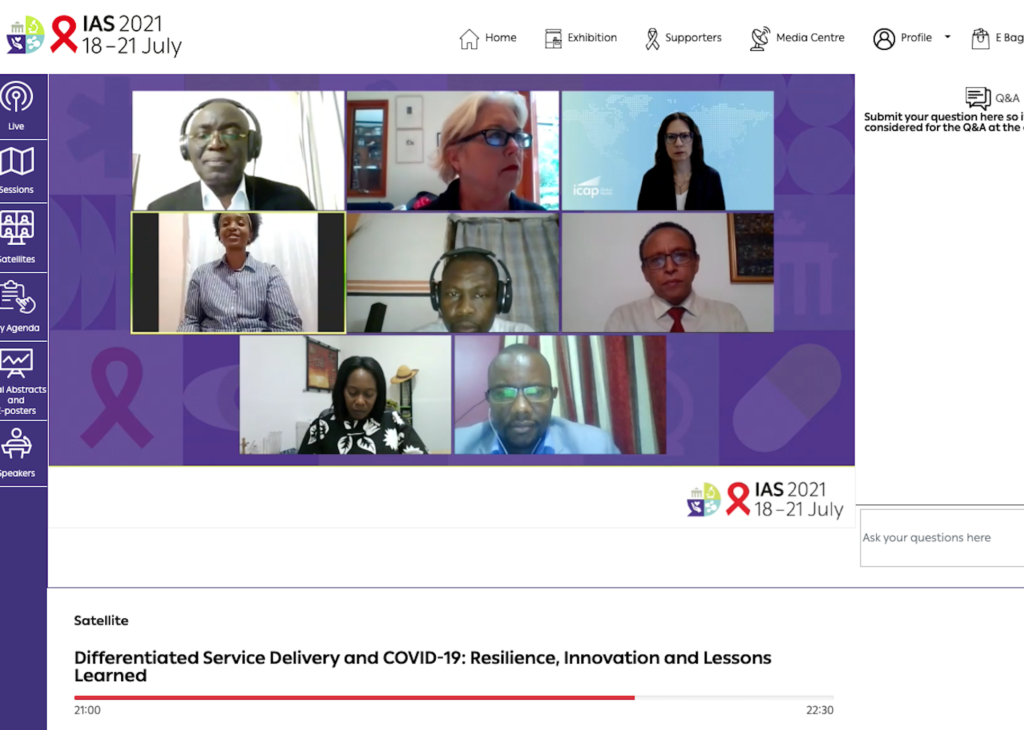
Over a thousand delegates joined this session led by Peter Preko, MB.ChB, MPH, CQUIN project director, who presented on how the 21-country CQUIN network adapted HIV service delivery models in response to the COVID-19 pandemic.
Tiffany Harris, PhD, MS, director of ICAP’s Strategic Information Unit presented data on the resilience of HIV services (testing, antiretroviral therapy (ART) initiation, multi-month treatment dispensing, and viral suppression) during the pandemic in approximately one thousand ICAP-supported sites in 11 countries.
Panelists from Rwanda, Uganda, Côte d’Ivoire, Ethiopia, and Nigeria presented case studies on the topic and participated in a live Q&A session with delegates.
How the “Recency Assay” is Being Used in HIV Programs Across Regions
The widespread provision of pre-exposure prophylaxis (PrEP) to populations at risk of new HIV infection has been identified as one of the ways to complement established HIV prevention and treatment efforts. Global and national guidelines increasingly call for HIV programs to integrate PrEP into screening, prevention, and treatment services. However, the successful deployment of expanded PrEP services is dependent on the availability of accurate and timely HIV incidence data at a sub-national level. In short, when public health leaders know where new cases of HIV are occurring and among whom, primary prevention efforts, including PrEP, can be delivered more efficiently and effectively.
ICAP’s Jessica Justman, MD, senior technical director, and principal investigator of the TRACE project — which helps ministries of health use HIV recency testing to improve HIV prevention programs and strengthen the precision of HIV infection surveillance systems—highlighted how ICAP-supported countries used recent infection data to target HIV prevention efforts. Using anonymized data dashboards from TRACE-partner countries, Justman demonstrated the efficacy of improved recent infection testing algorithms (RITA) in enhancing the precision of HIV incidence estimates.
ICAP Contributes to Journal of the International AIDS Society Special Issue on Key Populations in sub-Saharan Africa
Despite the progress made towards the HIV response over the past 20 years, stakeholders and policymakers now believe the goal of attaining HIV epidemic control by 2030 is unlikely unless greater focus and resources are urgently devoted to key populations most vulnerable to HIV infection.
The barriers to achieving epidemic control are detailed in a special supplement in JAIDS, which was launched at a satellite session entitled “Key Populations: The Future of the African HIV/AIDS pandemic?”
Omari Msumi, MD, ICAP in Tanzania’s technical advisor, contributed to the supplement by suggesting methods governments can apply to scale up services for key populations and participated in the satellite.
ICAP’s Oral Presentation on Adolescent-Centered Interventions in Nigeria Featured in HIV Data and Information Hub, NAM AidsMap
Franklin Emerenini, MBBS, MPH, ICAP’s pediatrics PMTCT lead in Nigeria, presented an oral abstract on the results of ICAP’s work on ART interventions for adolescents in Nigeria. The project, sponsored by the Reaching Impact, Saturation, and Epidemic Control (RISE) project led to the increase in viral suppression rates among young people, 10-24 years.
The abstract, “Optimizing Antiretroviral Treatment and Viral Suppression for Adolescents and Young People Living with HIV by Implementing Operation Triple Zero in Four States in Nigeria: Lessons Learned,” showed a 50 percent increase in viral load testing and a 20 percent increase in suppression among the targeted age group.
NAMaidsmap, an HIV and AIDS knowledge-sharing hub, featured the abstract in an article on successful approaches to managing HIV in adolescents and young adults in sub-Saharan Africa.
ICAP at the 2021 International Workshop on HIV Pediatrics
Prior to IAS 2021, Emerenini, together with Ruby Fayorsey, MD, MPH, deputy director, Clinical and Training Unit, and Olawale Fadare, MBBS, technical director for RISE, ICAP in Nigeria, presented the above-mentioned adolescent ART intervention findings at this year’s HIV pediatrics workshop, which was also co-chaired by Abrams.
In addition to this oral presentation, ICAP also presented two e-posters featuring research from Eswatini on missed opportunities for prevention of vertical HIV transmission and early infant antiretroviral treatment, and the journey from a positive HIV self-test to linkage and treatment for adolescent girls and young women in Zambia.
All the presentations, abstracts, and sessions are available on the IAS conference website for registered delegates until August 18, 2021. All content will be available to the public starting in September.

